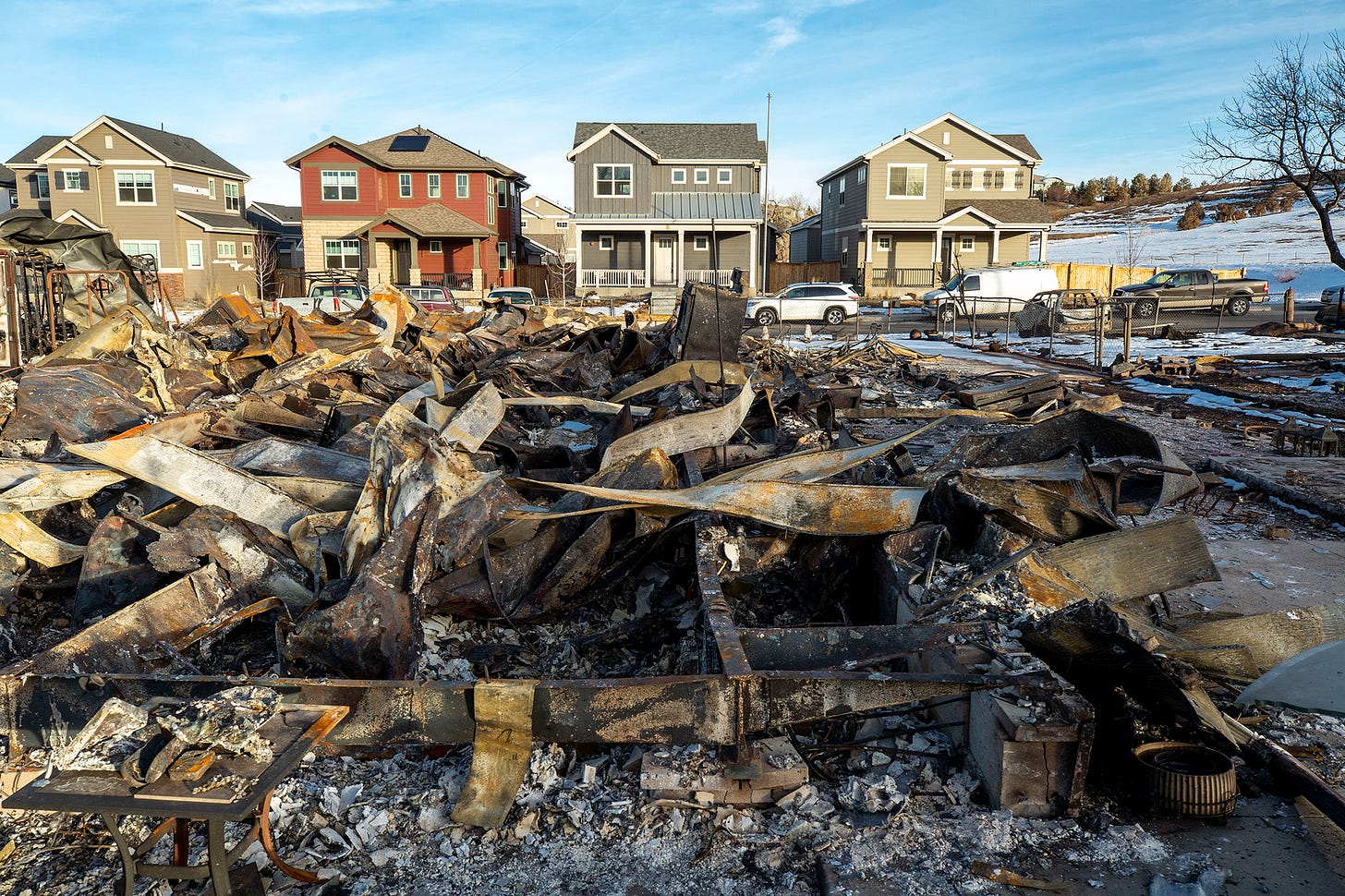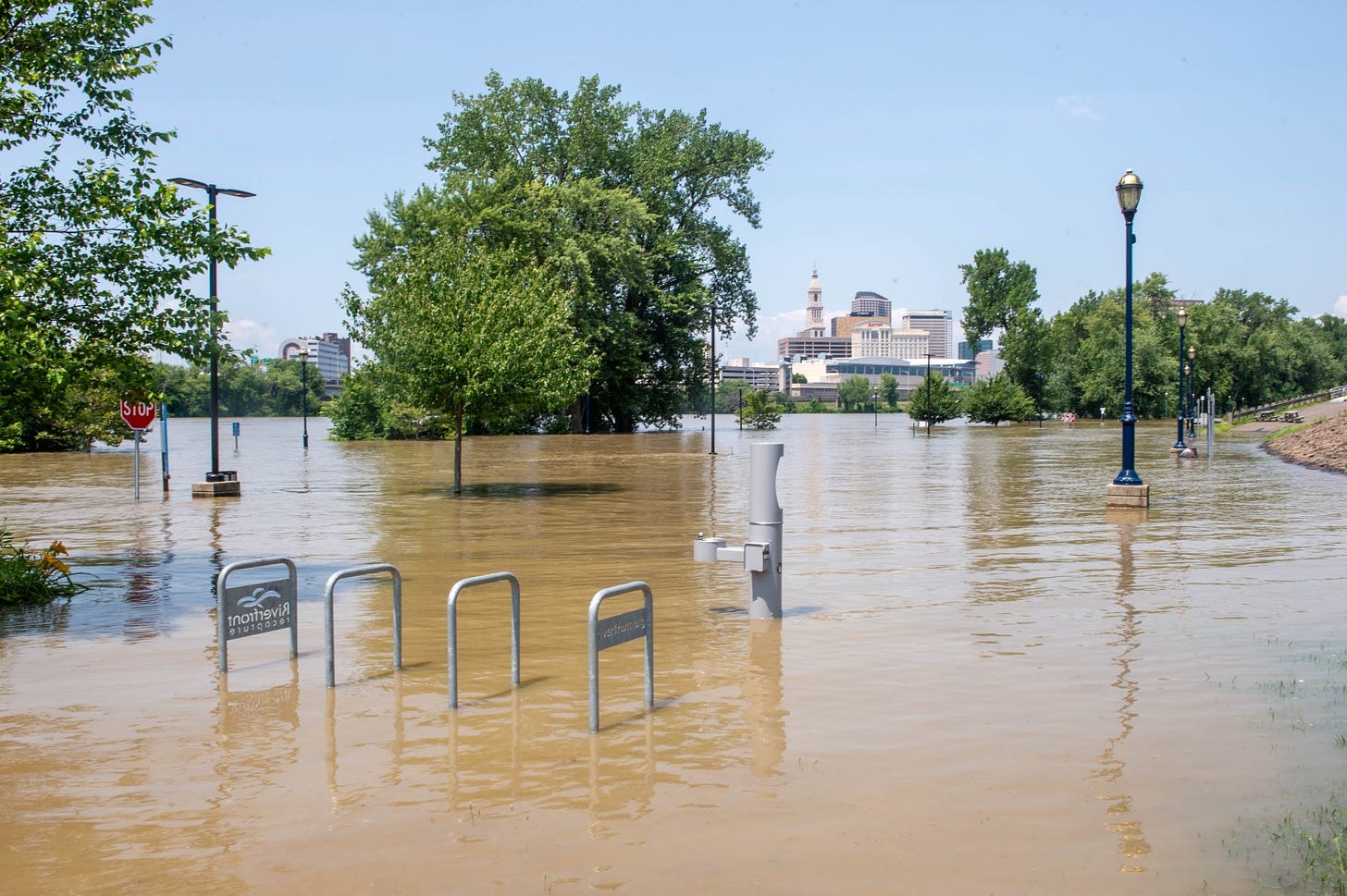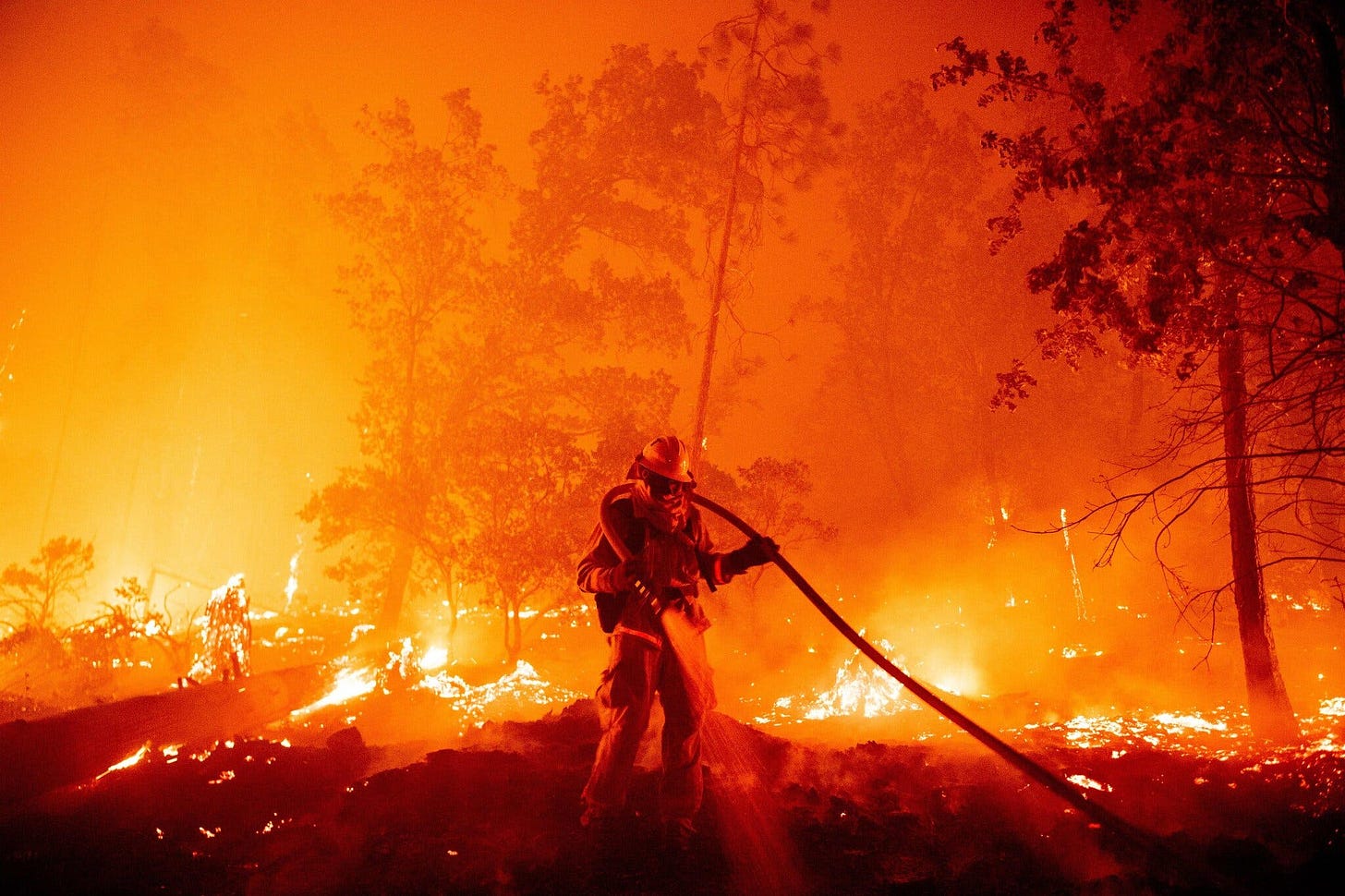How states are handling carbon-induced insurance meltdowns, part one
From C to shining sea: California, Colorado and Connecticut
In late May, the New York Times covered the news that State Farm will no longer write new policies in California’s property insurance market, and the story’s lede was perfectly clear: “The climate crisis is becoming a financial crisis.”
Because financial institutions are exposed to mounting losses from fossil-fueled climate disasters, insurance is one of the major channels through which climate risk is transmitted to the financial system.
As the climate crisis unfolds, insurers are withdrawing from markets with the greatest climate risk, canceling policies, and raising premium rates to ever less affordable levels. Thanks to a federal law from 1945, there is broad preemption against federal regulation of insurance.
Managing the financial and economic fallout from the insurance industry’s vulnerability to climate pollution is therefore largely a responsibility that falls to state regulators and legislators.
Accordingly, when the Treasury Department’s Federal Insurance Office (FIO) released a report in June outlining “Climate-Related Risk, Gaps in Insurance Supervision,” the FIO’s detailed list of policy recommendations were all for state policymakers.
In this post, we describe some of the major actions California, Colorado, and Connecticut took around climate and insurance policy over the last year. In the next post, we will review the Gulf South states of Florida, Louisiana, and Texas.
California
As climate pollution has made California’s wildfire seasons more intense, the Department of Insurance has increasingly depended on a state law enabling temporary freezes on non-renewals of insurance policies in certain regions. The law allows the insurance commissioner to issue moratoria only in zip codes with proximity to a declared disaster area. In recent years, the wildfire problem has grown so acute that moratoria have applied to 20% of California zip codes.
Last year, Insurance Commissioner Ricardo Lara won an unusually closely contested re-election after being challenged on his weak climate record. Earlier this year, Lara secured an agreement to expand commercial coverage with the Fair Access to Insurance Requirements (FAIR) Plan Association— a non-profit insurance pool created by California in 1968 to stave redlining. The FAIR Plan offers barebones, expensive coverage to Californians who cannot obtain insurance elsewhere, and the climate crisis is increasing pressure on state-mandated FAIR plans, potentially threatening their solvency. Larger insurers have to contribute more to California’s FAIR plan, a factor that has been cited as a reason behind this spring’s announcement that State Farm would not be writing new policies in the state.
After State Farm and Allstate’s decisions not to expand business in California made national headlines, Lara spoke with KQED’s Forum to clarify that existing State Farm and Allstate policies in California would not be affected, and that he would work to bring the giant insurers back.
Colorado

After 2021’s Marshall Fire became the most destructive wildfire in Colorado history, homeowners’ insurance became much more difficult to obtain, particularly in the Boulder region. Colorado lawmakers responded this year by creating a state insurer of last resort, a new, quasi-governmental FAIR Plan entity that caps coverage at $750,000— a lower limit than in California and other states with FAIR plans. In interviews after the FAIR plan was established, one legislator claimed the situation in Colorado as less dire than distressed insurance markets like Florida’s:
“There have been fires on Sugarloaf, but it isn’t the same as along the coast, where [disaster] is inevitable,” [state representative Judy Amabile] said.
Because of this, Amabile said that Colorado’s FAIR plan, in addition to being “bare bones,” is hopefully a temporary solution for many. Maybe if we have a few years without wildfire in a given area, she said, insurers might return.
A close look at the map of Colorado on FEMA’s national wildfire risk index provides reason for doubt. Legislators also approved SB 16— a far-ranging bill that included numerous climate finance provisions, and also put Colorado on the list of states participating in the National Association of Insurance Commissioners’ climate risk disclosure survey. With Colorado added, 16 states now participate.
Connecticut

Connecticut is a redoubt of the insurance industry, with Cigna, the Hartford Financial Services Group, Aetna (now a CVS subsidiary), and Travelers either headquartered or with a major office there. In 2021, Connecticut lawmakers passed a strong climate insurance supervision bill, which follows New York’s lead expecting insurance companies to conduct climate-related “scenario analysis.”
This year, Connecticut legislators introduced SB 1115, which seeks to acknowledge a major insurance company conundrum: by continuing to insure fossil fuel infrastructure, insurers are exacerbating the very crisis exposing their industry to catastrophic losses. SB 1115 would have enacted a surcharge on Connecticut insurers that underwrite new fossil fuel projects.
Although the bill did not move out of its first committee this year, it was invoked in other state legislatures’ insurance policy debates. One might think that insurers would be alarmed at the prospect of attacks on responsible investing (or Environmental, Social, and Governance aka ESG) creeping into their sector. After all, as Illinois Treasurer Mike Frerichs noted during a congressional hearing on the subject, responsible investment policy is nothing more than data and risk analysis— tools that are integral to insurance companies’ business model.
In our next post, we will look at state-level climate insurance policy and politics in the Gulf South states of Florida, Louisiana, and Texas. Be sure to subscribe to receive it and other Climate Politics Almanac posts.





